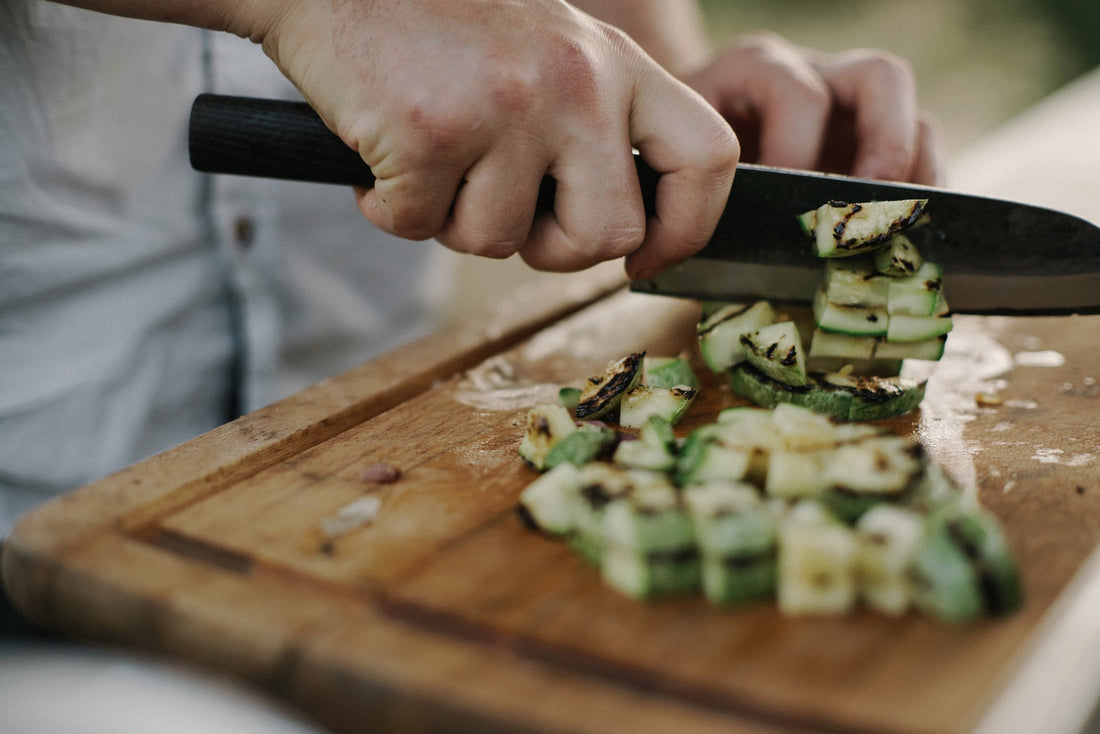
How To Clean A Bamboo Cutting Board
Share
Bamboo cutting boards are what people use to cut vegetables, meat, and a variety of other ingredients. Their robust construction and high tensile strength usually make this item hard to break. Bamboo surfaces are so hard and water-resistant, they prevent fluids from being absorbed, which makes these cutting boards an unsuitable environment for microbial or bacterial growth. Their appearance will not stain easily as well.
However, they require regular cleaning and maintenance to enhance their lifespan. If you are looking for ways to keep your bamboo cutting boards clean and maintained, read this write-up from the beginning to the end. The steps are as follows:
Wash Your Cutting Board
Usually, people keep things sitting for a while in the kitchen sink or dishwasher before they clean the dishes, utensils, and plates. However, you should never leave your bamboo cutting board in the sink to keep its oil coating protected and safeguard its structure. The heat of the dishwasher can also damage the structure of the cutting board.
Instead, you should make a mix of warm water and mild liquid soap. Soak a soft sponge in the soapy water then rub it with your hands against all the sides of the cutting board. After rubbing, take it below the running water to rinse it. While rinsing, ensure no food particles are left on it. In washing, avoid using hot water. You can use a soft cloth piece to remove the large food particles.
Disinfect
Disinfection is also vital for the better care of your cutting board. It is more crucial when you cut raw meat, onions, and green & leafy vegetables, and other raw ingredients on it.
For disinfecting your cutting board, you can pour a few drops of vinegar in warm water. Spread this mix on the cutting board and rinse it thoroughly. Always use a soft and clean towel to wipe it dry. You can also make a solution of 3% hydrogen peroxide with chlorine bleach and apply it to disinfect your bamboo cutting boards.
Get Rid of Stains and Odors
After washing and disinfecting, you may have stains on your bamboo cutting boards. For the removal of stains, take a dab of baking soda or coarse salt on a damp cloth. Rub this damp cloth piece on the stained part of your cutting board. Rinse it again with a wet and clean cloth piece after removing the stains. Never use a chemical solution to get rid of the stains from a bamboo cutting board.
For odor removal, spread lemon juice on every part of the bamboo cutting board. Rinse with a damp cloth piece. Applying lemon juice will help you to kill the germs and bacteria on your board.
Let it Dry
When you complete washing, disinfecting and removing the stains, you need to let your bamboo cutting board dry. Wipe the board with a clean, dry, and soft towel from one end to another. After that, stand the board vertically and leave it in this state for a few hours to drain all the moisture.
Oil it
Lubrication helps your board sustain its structure. Lubricate at least twice a month. For lubrication, apply a layer of warm food-grade mineral oil. Dab a soft cloth piece in the warm oil and rub it on each side as well on all the edges of your board. Leave the board standing vertically for a while so that the board absorbs the oils on every surface.
Store Safely
Proper storage plays a crucial role in enhancing the lifespan of your cutting board. What you need to do is place your cutting board in a cool and dry place and ensure that it firmly remains in a horizontal position.
Conclusion
Bamboo cutting boards are a necessity that you require for your kitchen needs, especially when you are highly conscious of the environment. This product is light, robust, durable, and affordable for everyone. With proper cleaning and maintenance, they will remain a helping hand for a long time giving you peace of mind as you are cutting vegetables, meat, and any other ingredients that you need in all of your meal preparations.
